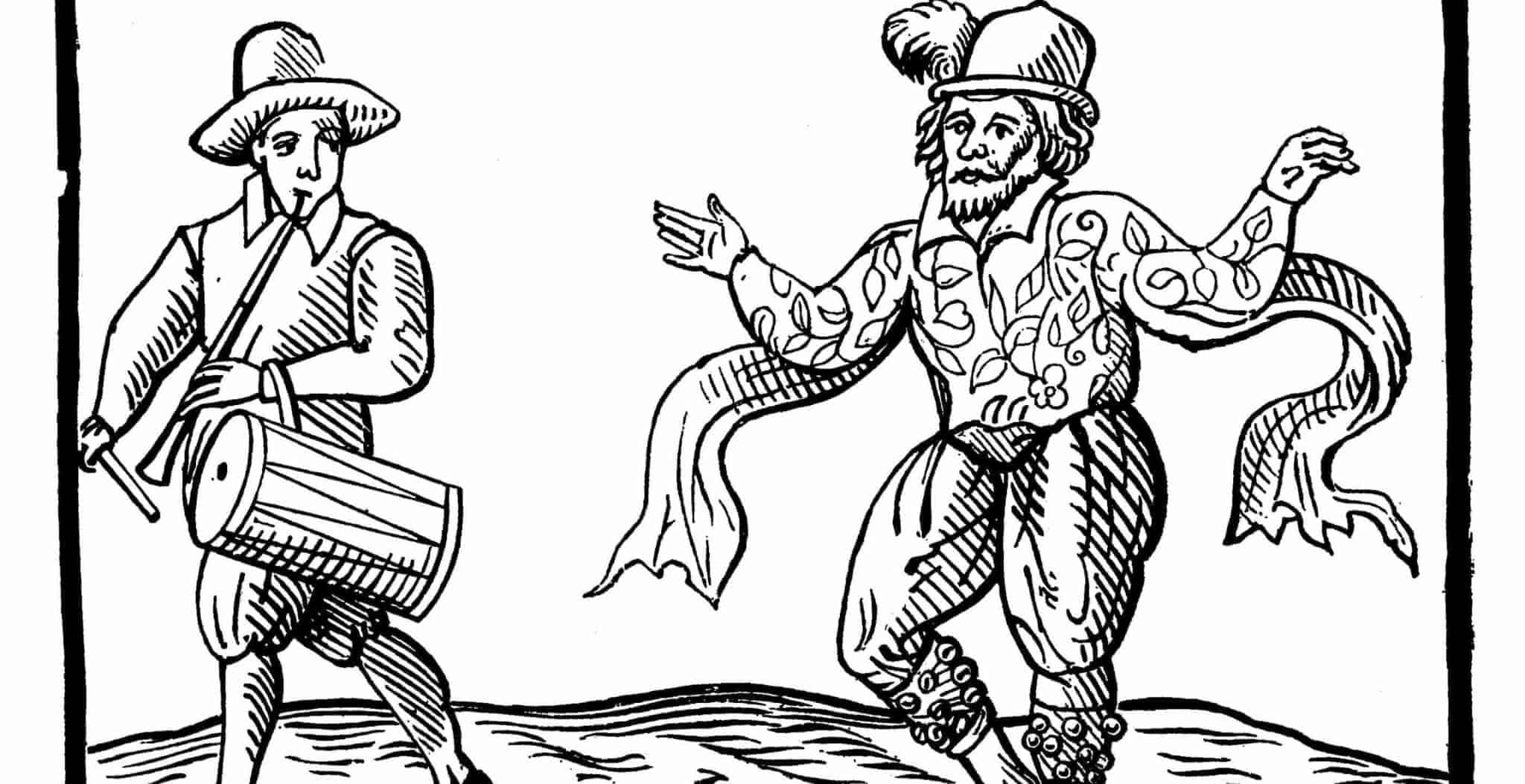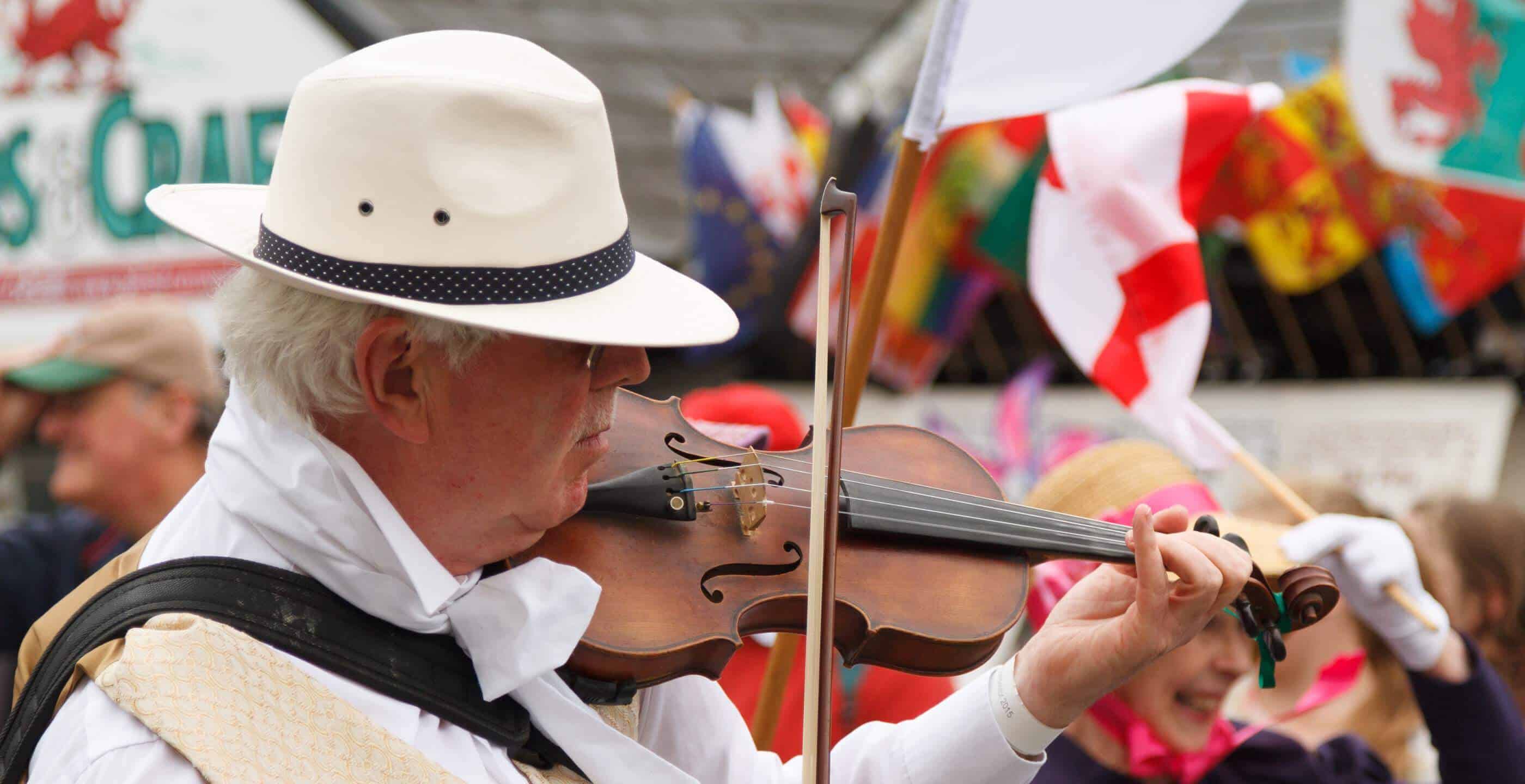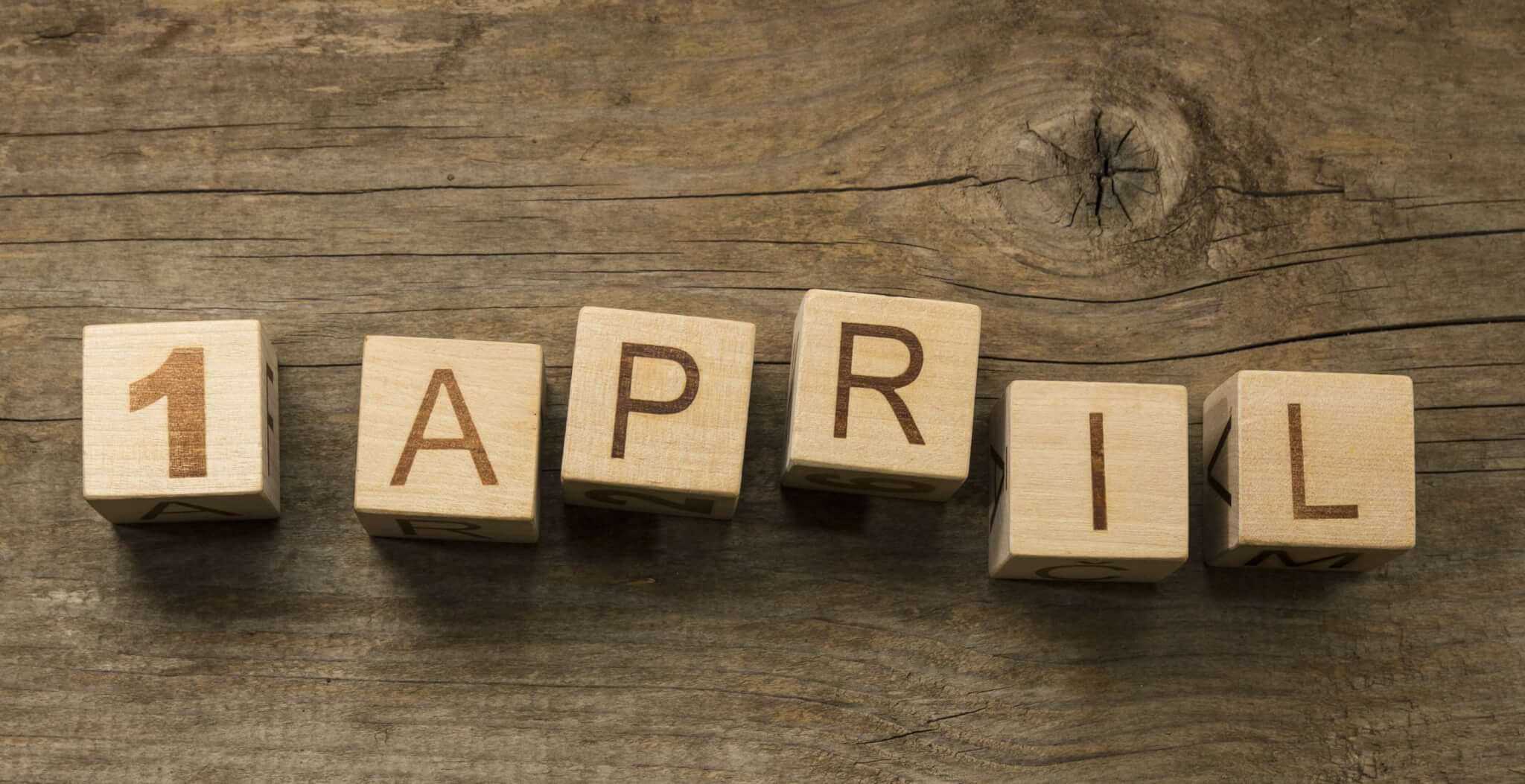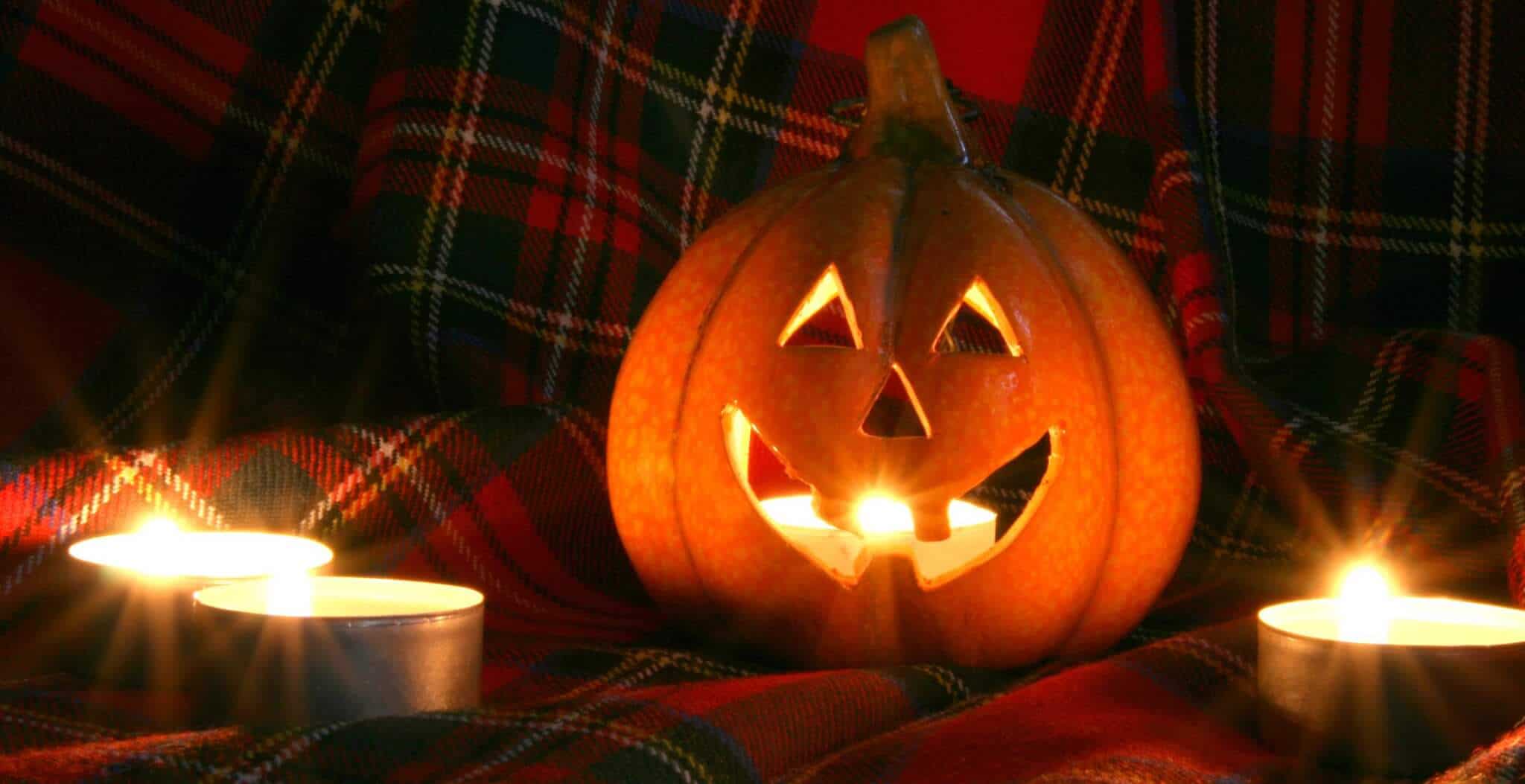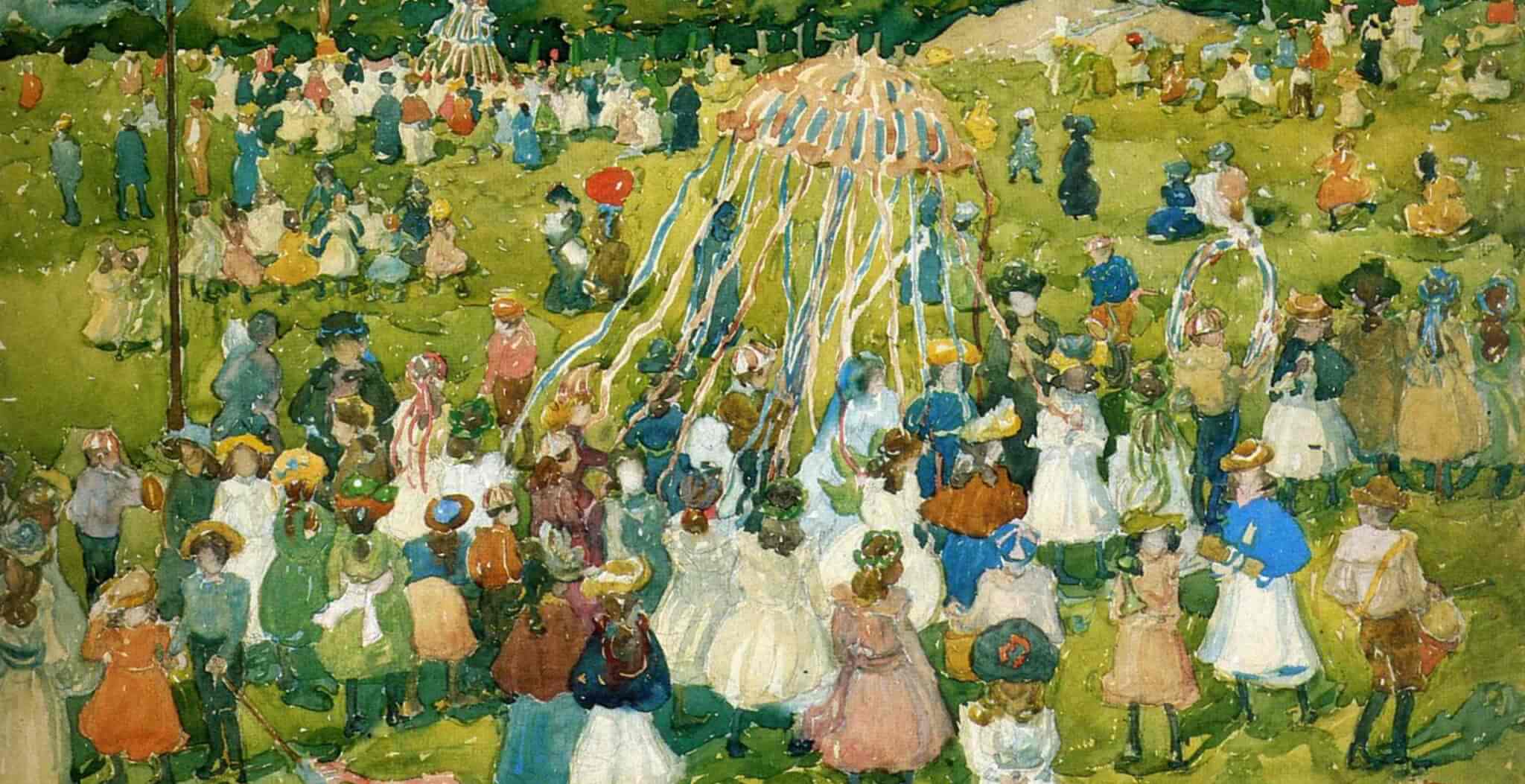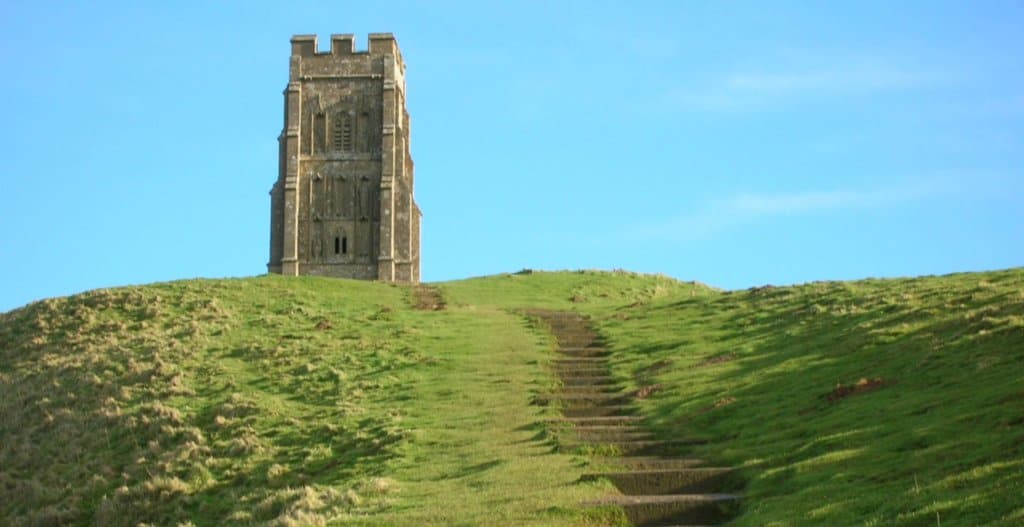If you happen to be in the village of Middleton, in Suffolk, on any Boxing Day you could be witness to an ancient tradition which until 10 years ago was almost lost. Once darkness has fallen, the main street of the village begins to fill with crowds of people; soon a reverent silence falls as flaming torches approach to the sound of a slow drum beat.
From the eerie gloom comes a procession led by a man dressed in Victorian agricultural clothes; he has a blackened face and wields a broom. Gently he sweeps the path clear for a fine gentleman, the Lord, resplendent in top hat and tails. On the gentleman’s arm is an elegant lady wearing a long green frock and matching bonnet. They too have blackened faces, and it’s only as they draw closer that you notice she sports a fine set of whiskers.
Behind them comes another man, again with blackened face, carrying a pole decorated with green garlands. The main body of the procession is a group of men in hats and overcoats, corduroy trousers and hobnail boots, walking silently in time to the drum beat. Completing the entourage are a number of women carrying various musical instruments, completely in black except for garlands of holly and ivy around their hats. This sinister-looking procession is followed by villagers and visitors carrying candle lanterns, eager to catch sight of the ceremony which is about to take place.
The procession travels through the main street of the village, completing its journey outside the Bell pub, where the musicians begin to play and the men remove their overcoats in preparation for the celebrations. The Umbrella Man (so-called because he carries a furled umbrella) is the only person in the group who speaks. He introduces you to Old Glory and you’re then treated to a fine display of Molly dancing, and singing to celebrate the occasion.
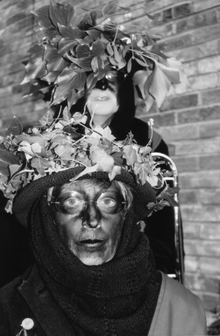 This is the ceremony of the Cutty Wren – a celebration of the King of the Birds. The Wren was declared King after a competition to see which bird could fly the highest. His main opponent was the eagle, but as the birds took off and began to fly ever higher, the wren jumped upon the eagle’s back so that however high the eagle flew, the wren flew even higher. The birds declared the wren the winner in a classic victory of brains against brawn, and so the Wren became a symbol of good luck. Originally the villagers of Middleton used to go around the village on St Stephen’s Day (26th December), to hunt and kill a wren. Its body was put on a garlanded pole, paraded around the village for all to see then, after much celebration, the various parts of the bird were distributed to those who needed them most.
This is the ceremony of the Cutty Wren – a celebration of the King of the Birds. The Wren was declared King after a competition to see which bird could fly the highest. His main opponent was the eagle, but as the birds took off and began to fly ever higher, the wren jumped upon the eagle’s back so that however high the eagle flew, the wren flew even higher. The birds declared the wren the winner in a classic victory of brains against brawn, and so the Wren became a symbol of good luck. Originally the villagers of Middleton used to go around the village on St Stephen’s Day (26th December), to hunt and kill a wren. Its body was put on a garlanded pole, paraded around the village for all to see then, after much celebration, the various parts of the bird were distributed to those who needed them most.
The wren has now been replaced by a carved wooden version, which is half hidden in the garlands on the pole. If you’re lucky you may catch a glimpse of it as it is paraded in front of the crowd.
Today, the celebrations are probably a little more restrained than they were 100 years ago, but the tradition has been successfully revived by the Old Glory Molly Dancers, and is once again an important part of the village calendar. Although similar celebrations of the Wren are still held in France, Scandinavia and other parts of Europe, such an elaborate ritual as that performed in Middleton appears to be unique in England – at least, no other references have yet been found by Old Glory. It’s certainly well worth a visit if you can escape from the turkey sandwiches on Boxing Day.
Molly dancing is unique to East Anglia, and is thought to be a version of Morris dancing, with its stylised stepping and strong arm movements. It can be very lively, and most Molly teams dance with a vigorous step-hop, lifting their knees and hopping high, combined with exaggerated arm swinging. Old Glory however, make their stepping very heavy, and vary it with different steps to specific movements.
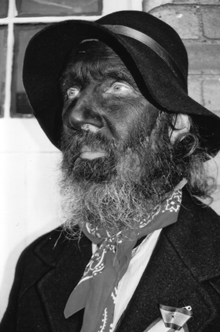 The strange characters in the team have a practical purpose: the Sweeper carries a broom to clear away any snow and evil spirits for the dancers; the Umbrella Man carries an umbrella to shield the musicians from rain or snow; the Box Man (sometimes known as a Cadger) collects money in a box. The most important people of all are the Lord and Lady, who lead the dancing. They often appear in morris dancing, mumming, and sword. The Lady – the man-woman – is usually a pantomime dame type figure, with exaggerated makeup and a bad dress sense. Old Glory however, see her as a serious character in authentic period costume, perhaps paying reverence to the importance of the woman as the home maker, the keeper of the fire and centre of the family, which stems from ancient pagan traditions. In some Molly teams all the dancers wear multicoloured outfits ` with a skirt over trousers; originally dressing as a woman may have simply been to assist the disguise as well as adding a bit more fun to the proceedings.
The strange characters in the team have a practical purpose: the Sweeper carries a broom to clear away any snow and evil spirits for the dancers; the Umbrella Man carries an umbrella to shield the musicians from rain or snow; the Box Man (sometimes known as a Cadger) collects money in a box. The most important people of all are the Lord and Lady, who lead the dancing. They often appear in morris dancing, mumming, and sword. The Lady – the man-woman – is usually a pantomime dame type figure, with exaggerated makeup and a bad dress sense. Old Glory however, see her as a serious character in authentic period costume, perhaps paying reverence to the importance of the woman as the home maker, the keeper of the fire and centre of the family, which stems from ancient pagan traditions. In some Molly teams all the dancers wear multicoloured outfits ` with a skirt over trousers; originally dressing as a woman may have simply been to assist the disguise as well as adding a bit more fun to the proceedings.
Not much is known about the original dances. When collectors such as Cecil Sharp toured the country in the 1930s collecting traditional songs and dances, Molly Dances were considered to be coarser versions of the local country dances, performed with irreverence and often drunken abandon. As such they weren’t considered to be worthy of recording so they weren’t written down and now very little information about them remains.
Old Glory have extensively researched the subject, speaking to the few people who remembered seeing the Cutty Wren ceremony early in the 20th century, and extracting snippets of information on which they could build and produce a performance. This has meant making up new dances based on the limited evidence available and their knowledge of country dance figures. Although they’ve no way of ensuring that the dances represent what was once performed, Old Glory believe they’ve captured the original feel. They’re fortunate in that the songs were deemed to be worth collecting, and so they are definitely traditional.
The team adheres to a strict set of rules, which haven’t altered since they were first formed 10 years ago. They only ever appear in public in full kit with heavily blackened faces, remaining straight-faced throughout their performance. They’ve perfected the skill of staring right through anyone in the audience who dares to try to make eye contact. All this isn’t just to unnerve any onlookers who might peer too closely; rather, it’s to ensure that the identity of the dancers isn’t revealed. Originally they’d have been farm workers out begging (albeit in return for entertaining the crowd); but as the drink took its effect and the performance became rather rowdy, they wanted to be sure that their employers or the law didn’t know who the individuals were. Although I’m assured they’re all having fun, no one smiles as that’s a certain way of giving away their identity.
Only men dance – they’ve nothing against mixed teams, but according to their research only the men danced originally, perhaps joined by women for the occasional dance but they wouldn’t have been considered as part of the team. To be fair there are only women musicians and this arrangement has worked well for the last 10 years so there’s no desire to change. There’s always a place for everyone who wants to be involved. Those who still want to be part of the team but who can’t dance for whatever reason can still play an important part. There are usually four men positioned around the dancers who not only help to ensure that the dancers don’t stray too far, but also act as crowd control, ensuring that there’s enough room for the performance and that the onlookers stay clear.
Old Glory begin their season with practices starting in the autumn, only performing over the winter months when many agricultural workers would have been laid off and in need of earning some money on the side. This also coincides with the season of misrule, over the Christmas period, when traditionally everything was turned on its head and general chaos, frivolity and disorder dominated the community – what a great excuse for a party!
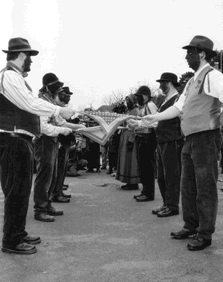
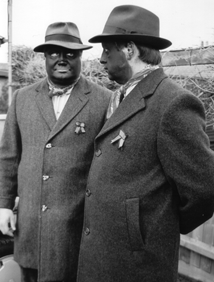
This tradition continues to be observed today, for further details please follow this link to the Old Glory website.
Alternatively, Peter Jennings, the Wren Bearer, can be contacted as follows;
Email: pete@gippeswic.demon.co.uk
